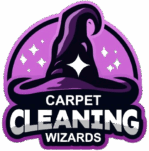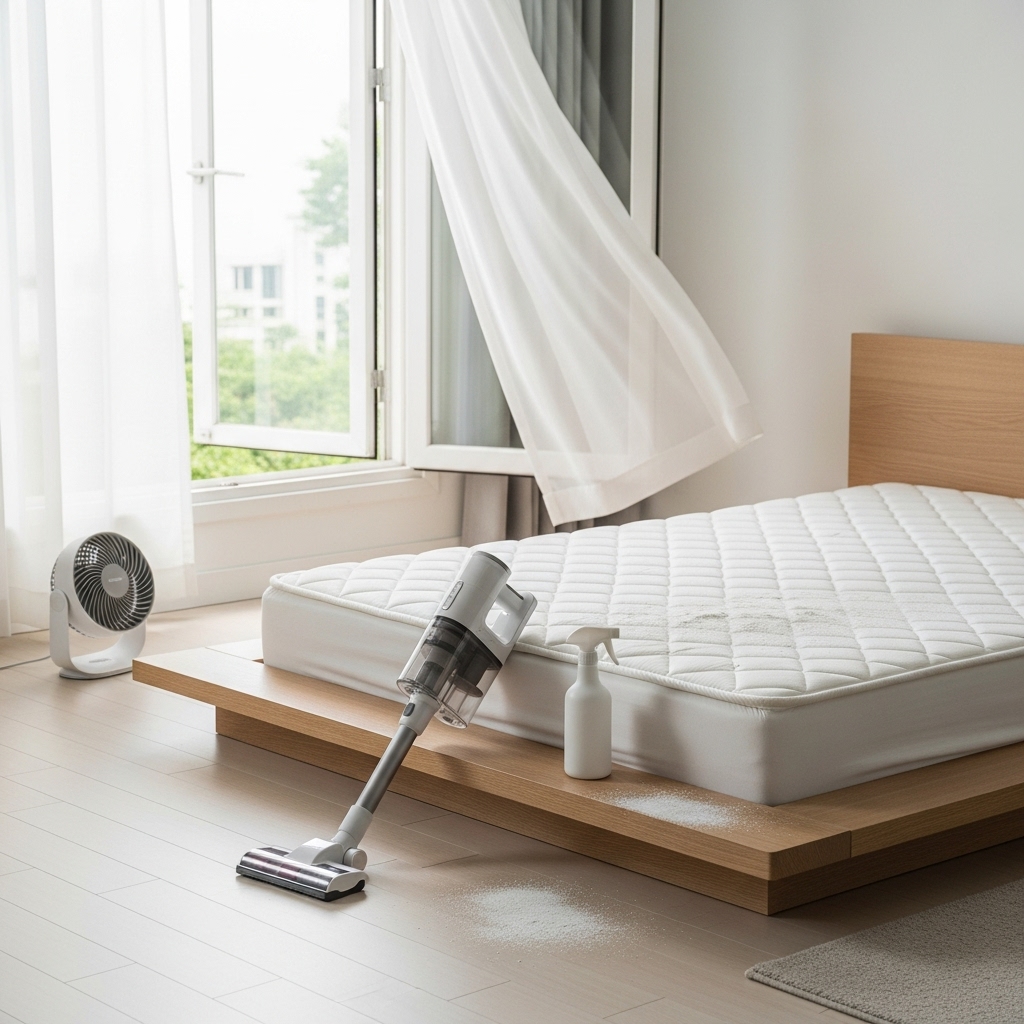Keeping your mattress clean in Elizabeth, New Jersey is a smart investment in your health, comfort, and peace of mind. Between seasonal pollen, urban dust, and the humidity that often rolls in from the Arthur Kill, mattresses in our area collect more than surface-level dirt. This guide walks you through a safe, thorough, and practical process for refreshing your mattress at home using tools you already own, along with a few household staples. You will learn how to remove odors, lift stains, minimize allergens, and keep the fabric and interior layers protected. If you want to compare your at-home results to what deep cleaning can accomplish, you can explore professional options for mattress cleaning as you read along and decide what works best for your schedule and goals.
Why mattress hygiene matters in Elizabeth, NJ
Mattresses are high-contact surfaces, which means they quietly accumulate sweat, skin cells, natural body oils, dust, and airborne particles day after day. In Elizabeth, those airborne particles can include pollen from neighborhood trees, fine urban dust from busy corridors like Elizabeth Avenue and Broad Street, and moisture that encourages microbial growth. A well-maintained mattress helps limit exposure to these irritants, supporting better nighttime breathing and calmer mornings for anyone with allergies or mild asthma.
Beyond general cleanliness, there is a comfort factor. A fresh mattress surface feels cooler and more breathable because fibers are no longer weighed down with debris. Breathability matters on summer nights when humidity lingers, even with air conditioning. Regular cleaning not only improves sleep quality but also supports the integrity of the mattress materials, keeping foams responsive and fabrics resilient so your mattress lasts longer.
Finally, a clean mattress complements your broader home routine. If you recently deep cleaned rugs, laundered curtains, or replaced HVAC filters, your mattress should be part of that holistic approach. A single dusty or musty surface can reintroduce odors and particulates into a room. By matching your mattress maintenance to seasonal shifts in Elizabeth—especially during spring bloom or late-summer humidity—you reduce the chance of recurring odors and irritants returning.
Preparing your space and gathering supplies
Before you begin, clear a comfortable workspace around your bed. Open a window if the weather is dry and temperate, or run a fan to improve air circulation. Ensure you have time for thorough drying; rushing the process can trap moisture under a fitted sheet and leave a lingering smell. When possible, plan your cleaning earlier in the day so your mattress can dry fully before bedtime.
For supplies, you will want a vacuum with a clean upholstery or crevice attachment, baking soda, a spray bottle, cold water, mild liquid dish soap, and white vinegar. If you have an enzyme-based cleaner compatible with fabric and foam, keep it handy for organic stains such as sweat or food spills. Use light-colored microfiber cloths to avoid dye transfer, and have several fresh towels available for blotting.
Always spot test any liquid solution on a discreet area of your mattress cover or side panel. Foam and fabric blends vary widely from one mattress to another, and what works on a cotton-topped hybrid may not suit a memory foam core. A quick test helps prevent rings, discoloration, or over-wetting the surface.
Step-by-step: cleaning and refreshing a mattress at home
Start by stripping your bedding completely. Launder sheets and pillowcases on the warmest settings recommended by the manufacturer. If you use a mattress protector, wash it according to the label and inspect it for tears or worn-out elastic before putting it back into rotation. Clean bedding prevents newly shed particles from settling back onto the mattress the moment you finish.
Vacuum the entire surface methodically. Use overlapping strokes and light pressure to lift dust without abrading the fabric. Pay extra attention to seams and tufting where debris tends to collect. Move slowly; a quick pass will not extract settled particles. If possible, vacuum the sides of the mattress and the foundation or platform as well.
Deodorize with baking soda. Sprinkle a moderate layer across the surface and gently distribute it with clean, dry hands. The goal is an even dusting, not full coverage like snow. Allow the baking soda to sit for 30 to 60 minutes to absorb odors. If you have the time and ventilation, leaving it for a few hours can yield even better results, especially if the mattress has trapped humidity from summer nights.
While the baking soda sits, mix a mild cleaning solution for spot treatment. In a spray bottle, combine cold water with a few drops of mild liquid dish soap. Cold water is important because heat can set protein-based stains. For tougher organic stains, dilute a small amount of enzyme cleaner according to the label. Avoid saturating the mattress; light misting paired with blotting is much safer for foam and interior layers.
Blot stains rather than rub. Place a folded microfiber cloth over the stained area and press gently so the liquid lifts into the cloth. Then lightly mist the area with your cleaning solution and continue blotting with a fresh part of the cloth. Work from the outside of the stain toward the center to avoid spreading. Alternate between damp and dry cloths until the area looks clean and feels only slightly damp.
Neutralize residual odors with a vinegar solution if needed. A mixture of one part white vinegar to three parts cold water can help with stubborn smells. Apply sparingly via mist, then blot. Vinegar’s initial scent dissipates as it dries, taking other odors with it. If the mattress fabric is sensitive, skip vinegar and stick with light soap and water or an approved enzyme cleaner.
After stain treatment, revisit the baking soda phase. Vacuum all of it thoroughly, using slow passes to collect fine powder from stitching and textured fabric. If you treated stains after your first round of powder, you can add a second light sprinkle to areas that still carry a faint smell, then vacuum again after a short rest period.
Encourage drying and airflow. Place a fan near the bed and angle it across the mattress to speed evaporation. If weather permits, open a window for cross-breeze. The goal is to return the mattress to a completely dry state before redressing it. A slightly damp surface may feel cool at first but can cause odors to reappear or contribute to mold over time.
Finish with a protective reset. Once fully dry, add a clean, high-quality mattress protector. It acts as a barrier against future spills, pet fur, and dust, and it makes your next cleaning easier. Replace pillows and bedding with freshly laundered sets to lock in that clean-sleep feeling from the first night.
Tips tailored to Elizabeth homes
If your bedroom faces heavy street traffic, dust may accumulate faster. Consider vacuuming the mattress surface lightly every month and scheduling a deeper deodorizing session at the start of each season. During peak pollen, keep windows closed while you sleep and rely on a fan for comfort; then, air the mattress out on a day with low pollen counts to keep allergens in check.
Humidity is another local factor. On days when the air feels heavy, avoid introducing extra moisture to the mattress. Focus on dry methods like thorough vacuuming and baking soda, and use only minimal misting on stains. When the forecast predicts dry, breezy weather, take advantage by airing out the room and boosting ventilation.
When DIY is not enough
Most mattresses benefit from periodic professional attention, especially if you struggle with recurring odors, widespread staining, or allergies that spike at night. Some cleaning tasks require controlled heat, extraction equipment, or targeted treatments that are hard to replicate at home without risking damage. When you want an extra-deep refresh with shorter dry times, you might explore professional mattress cleaning to complement your routine. Think of it as pairing your regular house cleaning with the occasional deep clean: your daily and seasonal efforts set the foundation, while a professional service resets everything to a like-new baseline.
Another reason to consider outside help is time. Parents, busy commuters, and caretakers in Elizabeth often juggle tight schedules. If your best cleaning window is late evening, you may feel tempted to cut drying short. A service visit planned for a morning or afternoon can handle deep sanitation and leave your mattress ready for use that night, reducing disruption to your week.
Frequently asked questions
How often should I clean my mattress at home? In Elizabeth’s climate, a light refresh every one to two months and a deeper session each season is a practical cadence. If you share your bed with pets or experience spring allergies, increase the frequency to maintain comfort.
Can I use a steam cleaner on my mattress? Steam can sanitize, but it also delivers moisture deep into foam and batting, which can be risky without powerful extraction and strong airflow. If you do not have a way to pull moisture back out quickly, avoid steam and choose lighter methods.
What is the best way to deal with sweat stains? Use cold water and a mild dish soap solution, dabbed gently with microfiber. For persistent discoloration, an enzyme cleaner designed for fabrics can help, but always spot test first and avoid soaking.
How do I remove lingering odors? Baking soda is your first line of defense, followed by careful blotting with a diluted vinegar solution if the fabric allows. Ensure excellent ventilation during drying so odors do not get trapped again.
Is flipping or rotating necessary? Many modern mattresses are one-sided and should not be flipped, but rotating head to foot every few months can distribute wear and keep the surface more even. Check your manufacturer’s guidance for your specific model.
Will a mattress protector make a real difference? Yes. A breathable, washable protector catches spills, oils, and dust before they enter the comfort layers. It simplifies regular upkeep and extends the life of your mattress.
What if I have dust mite allergies? Combine regular vacuuming and baking soda deodorizing with hot-water laundering of bedding. Keep humidity in check, and consider periodic deep services to target allergens that settle below the surface.
How can I dry my mattress faster? Maximize airflow with a fan across the surface, open a window when the outside air is dry, and limit the amount of liquid you apply during spot treatments. Patience during the drying stage safeguards the results.
Schedule your mattress refresh today
Your bed should feel like a sanctuary every night, not a source of odors or sneezes. Use the steps in this guide to reset your mattress and enjoy cleaner, cooler sleep in Elizabeth. When you are ready for a deeper reset or want help tackling stubborn stains and allergens, schedule trusted mattress cleaning with a local team that understands our climate, our homes, and the way Elizabeth families live.

